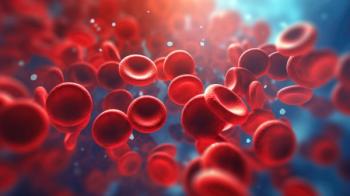
New Strategies for Analyzing Oligonucleotide Aggregates
In a new study, nucleic acid and LNP aggregation is examined using prototype ultrawide pore size exclusion chromatography (SEC) columns with low adsorption capabilities.
Technological limitations have made it difficult for scientists to identify oligonucleotide aggregates. This can pose challenges when finding techniques to reliably analyze size variants for large nucleic acids and lipid nanoparticles (LNPs).
A new study published in Analytical Chemistry, nucleic acid, and LNP aggregation is examined using prototype ultrawide pore size exclusion chromatography (SEC) columns with low adsorption capabilities. The initial phase of the study was dedicated to investigating the physicochemical properties of these columns.
The researchers found a striking disparity in aggregate content observed for a model messenger RNA (mRNA) produced by different manufacturers. The study revealed that the aggregate content could vary significantly, with percentages ranging from 17.8% to 59.7%.
The research team subjected the aggregates to a heat treatment. This thermal stress test led to a reduction in the aggregate content, dropping from 59.7% to 4.1%. Simultaneously, the main peak area increased by 3.3-fold, underlining the potential for thermal stress to refine the quality of nucleic acids.
One particularly noteworthy achievement of this study was the separation of plasmid DNA topological forms and multimers through analytical SEC. This allowed researchers to draw critical comparisons between degradation trends obtained through SEC and data acquired via anion exchange chromatography methods.
Further expanding the horizons of this research, unconjugated and fragment antigen-binding (Fab)-guided LNPs were subjected to analysis. Their elution times were meticulously charted in relation to their sizes, as measured by dynamic light scattering (DLS). To gain a more comprehensive understanding, multi-angle light scattering (MALS) was integrated with SEC to probe large species eluting before the LNPs.
As health authorities continue to emphasize the importance of understanding oligonucleotide aggregates, this research stands as a testament in the pursuit of better, more accurate, and reliable analytical tools in the field of biotechnology.
This article was written with the help of artificial intelligence and has been edited to ensure accuracy and clarity. You can read more about our
Reference
Goyon, A.; Tang, S.; Fekete, S.; Nguyen, D.; Hofmann, K.; Wang, S.; Shatz-Binder, W.; Fernandez, K. I.; Hecht, E. S.; Lauber, M.; Zhang, K. Separation of Plasmid DNA Topological Forms, Messenger RNA, and Lipid Nanoparticle Aggregates Using an Ultrawide Pore Size Exclusion Chromatography Column. Analytical Chemistry 2023, 95 (40), 15017–15024. DOI:10.1021/acs.analchem.3c02944.
Newsletter
Join the global community of analytical scientists who trust LCGC for insights on the latest techniques, trends, and expert solutions in chromatography.




